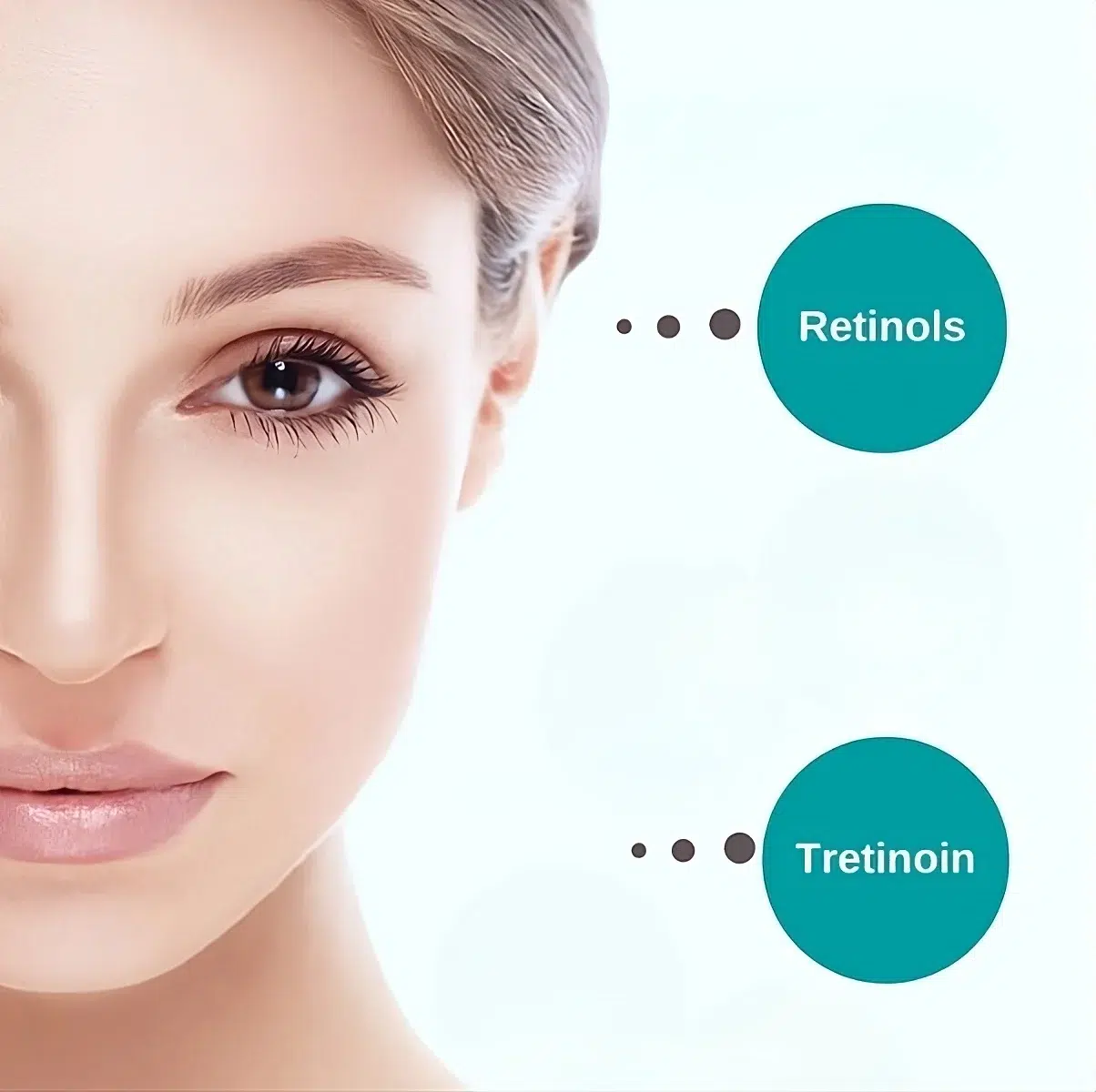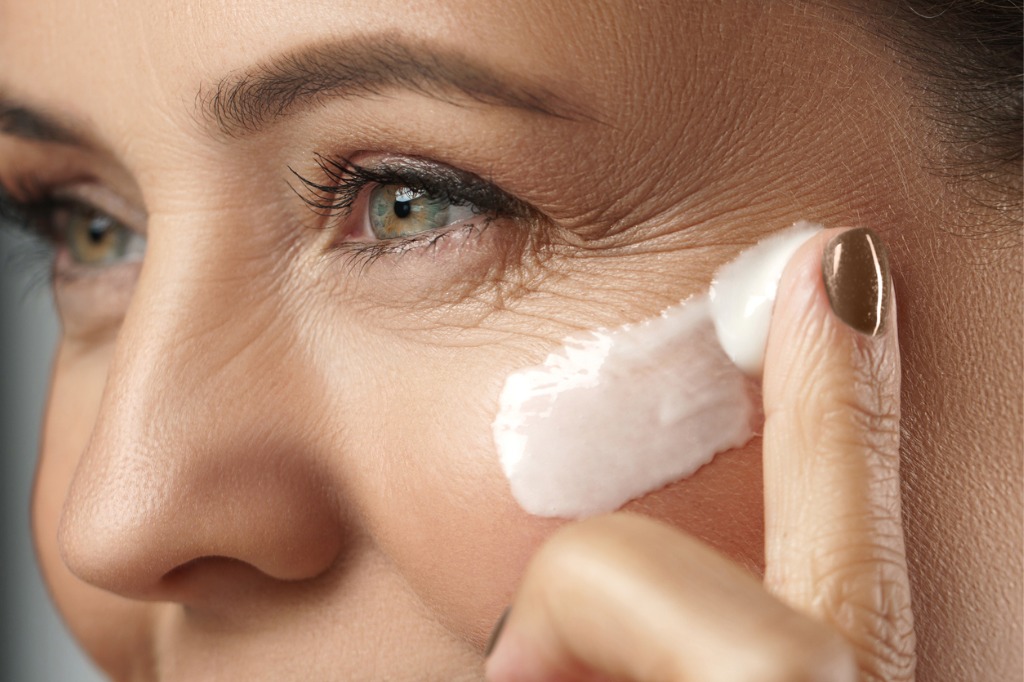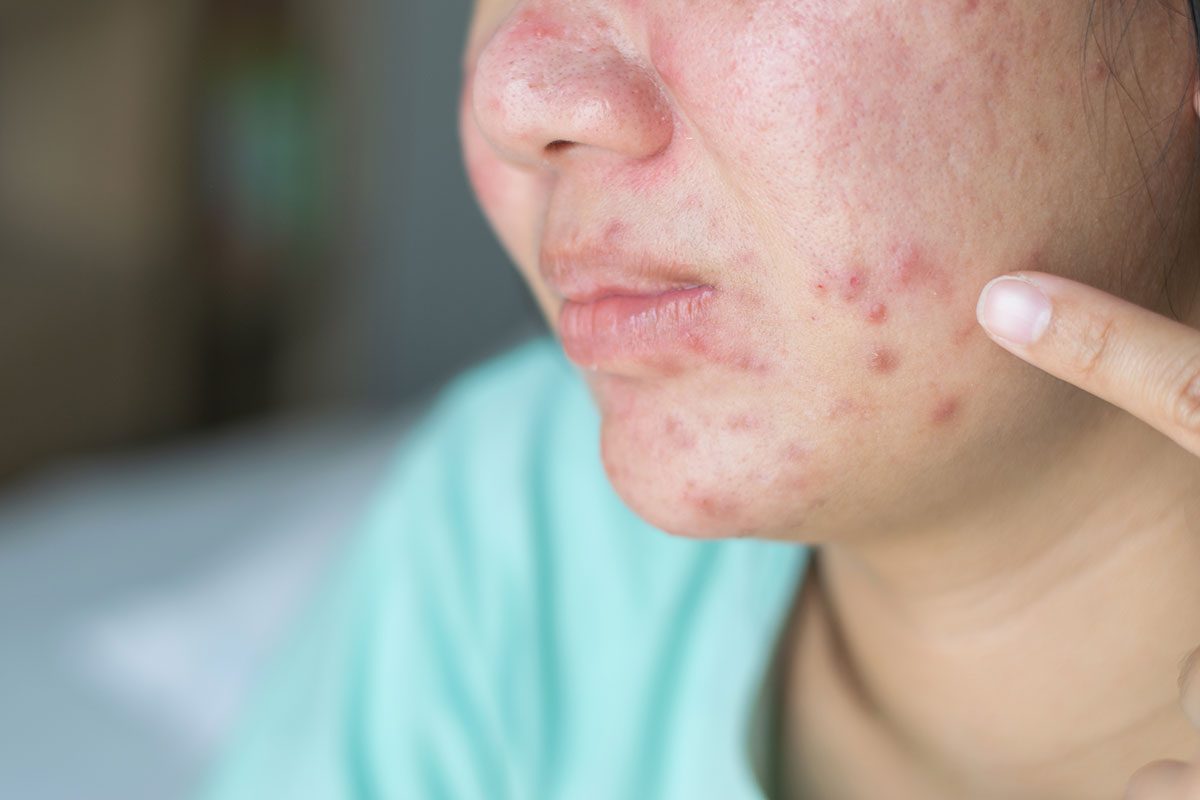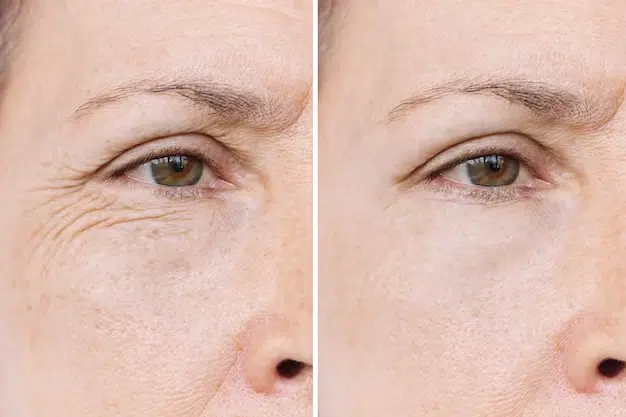Tretinoin vs Retinol? If you’ve been doing your skincare for a while, you’ve probably heard of Retinol and maybe even seen it pitted against Tretinoin, two common skincare compounds. Let’s take a look at what Retinol and Tretinoin are, how they function, and why Retinol cream should be used for anti-aging skin care.
What is Retinol and how does it work?
Retinol is a type of retinoid, which is a naturally occurring vitamin A derivative that helps to smooth out the skin. Speeding up skin cell turnover (and increasing new healthy skin cell growth), levelling out pigmentation, and reducing fine lines and wrinkles are just a few of the benefits, all without clogging your pores.
Retinol is an active element in several popular skincare treatments. To promote cleaner, younger-looking skin, Obagi Retinol cream comes in two concentration levels (.5% and 1.0 percent retinol). Retinol is popular not only because of the excellent results it provides, but also because it is available over-the-counter, whereas tretinoin is not.
But wait, what is Tretinoin, exactly?
Tretinoin vs Retinol. Are Tretinoin and Retinol the Same Thing? Which is the better option?
Tretinoin and Retinol are comparable chemicals with a few major distinctions. Tretinoin is a retinoid, like Retinol, however, Tretinoin is a concentration of pure retinoic acid, unlike Retinol. Only when retinol has been stored and progressively absorbed by your skin is it transformed into retinoic acid. As a result, Tretinoin is incredibly successful at the same things that Retinol is good at in a more immediate approach, especially when it comes to acne. However, Tretinoin can cause redness, itching, and peeling in sensitive skin types, at least at first.
Retinol users, on the other hand, may take a little longer to see results but won’t have to deal with the annoying side effects; in other words, they’ll avoid the bad and get the benefits.
This is why tretinoin isn’t found in over-the-counter cosmetics; instead, it’s only available via prescription, in the form of medications like Retin-A and others. If you’re not sure if tretinoin products are right for you or your skin type, talk to your dermatologist.
Otherwise, anti-aging creams with Retinol as an active component are the least irritating and most widely available.
Strength of Tretinoin vs Retinol
The most significant distinction between these two substances when it comes to treating your skin is their strength.
Retinol is a necessary component of human health. It’s fat-soluble, which means it can last a long time in your body. Your liver can transform this stored retinol into tretinoin, according to 2021 researchTrusted Source. Tretinoin is used by your body for a range of biological purposes.
Tretinoin can be considered a more concentrated version of retinol in terms of skincare. Tretinoin is, therefore, more powerful than retinol.
When it comes to picking a skincare product, this difference in strength might help you make an informed decision.
Over-the-counter vs. prescription
Retinol can be found in a range of over-the-counter skincare products (OTC). Retinol-containing products can be found in most major drugstores and many grocery stores’ personal care sections.
The retinol content of some of these products may be listed as a percentage. Because the Food and Drug Administration (FDA) does not require this, not all goods will disclose this information. It’s often advisable to start with a lower retinol concentration and gradually raise it as needed.
Because tretinoin is more powerful than retinol, it can only be obtained with a prescription in some countries.
Whether you want to try retinol or tretinoin, talking to a dermatologist can help you figure out what’s best for you.
Tretinoin vs Retinol – When they’re used
Both retinol and tretinoin are commonly used as topical treatments for a variety of skin conditions, according to experts. These include:
- acne
- melasma
- solar comedones
- liver spots
- sun spots
- fine wrinkles
Under the direction of a doctor, people sometimes use prescription tretinoin to treat other skin conditions, 2021 research says. Tretinoin can take the form of a cream applied to the skin or an oral tablet.
Retinol might not be an adequate substitute in these cases.
Consult with a doctor before using retinoids to treat conditions like:
- basal cell carcinoma
- squamous cell carcinoma
- acute promyelocytic leukemia (APL)
- keratosis follicularis (Darier disease)
- psoriasis
Tretinoin vs Retinol Benefits
Retinol and tretinoin provide many of the same benefits because they are so comparable. These are some of them:
Treatment for acne. A review from 2017 Topical retinoids, states that they are quite successful in treating acne. Both retinol and tretinoin are commonly used for this reason.
Support for the elderly. Since the 1970s, retinoids have been used to balance out skin tone and decrease fine wrinkles. This is a widely used and well-studied application for these chemicals.
Collagen synthesis. Both retinol and tretinoin treatments enhanced collagen production, according to a 2016 study. This has a variety of health benefits, including increased skin elasticity.
While both retinol and tretinoin have similar benefits, tretinoin works faster and has larger impact.
Tretinoin vs Retinol Side effects and risks
Retinoids come with several dangers. There is overlap between retinol and tretinoin in this scenario as well.
The following are some potential dangers:
Irritation. Retinoid creams can irritate the skin, especially when used for the first time or at greater doses. Apply retinoid cream with caution around your eyes and mouth.
Hyperpigmentation. This is a name for black skin marks in patches. According to the American Academy of Dermatology, those with dark complexion are more prone to experience this reaction to retinoids.
Photosensitivity. When taking retinoid creams, stay out of the sun, even if you’re only using them at night. Retinoids, according to a 2021 reviewTrusted Source, enhance the risk of sunburn.
Risks of pregnancy If you’re pregnant or think you might be pregnant, talk to your doctor about using retinoid creams.
While tretinoin may provide more significant benefits than retinol, it also has more noticeable negative effects.
What is the best way to apply Retinol Cream?
So you’re ready to join the Retinol craze, but you’re not sure what you’ll need to get started with the product. “Should I take Retinol in the morning or at night?” is a common query. or “What’s the difference between retinol creams with a concentration of 0.5 percent and 1.0 percent?”
While your dermatologist can provide specific advice, general guidelines include using the concentration amount that is right for your skin – while both 0.5 percent and 1.0 percent formulations cause minimal irritation, it is recommended that you use the lower concentration if you have sensitive skin.
Because exposure to sunlight decreases the effectiveness of Retinol Cream, we recommend using it at night. Apply evenly throughout your face until it is completely absorbed. Enjoy retinol’s tremendous advantages with the fewest possible negative effects!
Choosing a retinoid
Choosing the right retinoid treatment for you will depend on your skin type, risk factors, and the desired outcome. A dermatologist can help you make an informed decision that works for your unique set of circumstances.
Who should try retinol?
For most people, retinol is going to be the best first choice for retinoid treatments.
Because retinol has a lower concentration, the irritation it causes will likely be less severe. If you’re just starting a new regimen, you can apply retinol cream every other day at first, so your skin has more time to adjust to the treatment.
If you’re not seeing the desired effects after 2 to 3 months, you can always try switching to a higher percentage retinol cream. These are OTC medications, so you can switch to a lower or higher concentration as you see fit.
Be on the lookout for adverse reactions whenever you change your retinol treatment.
Who should try tretinoin?
If you’ve tried retinol and haven’t gotten the results you’re after, you might think about switching to tretinoin. The higher concentration of tretinoin tends to make its side effects more pronounced than retinol, so you may want to take that into consideration before making a decision.
Tretinoin is available by prescription only, so you will need to speak with a doctor before you can purchase it. Be sure to tell them what, if any, retinol treatments you may have already tried. Prescription tretinoin can be adjusted to your individual needs.
Tretinoin vs Retinol? Conclusion
Retinol and tretinoin are both retinoids, which means they are compounds that come from vitamin A. They’re both commonly used in topical creams to treat a number of skin conditions.
Though they’re similar, tretinoin is more concentrated than retinol. For this reason, tretinoin acts faster and has more dramatic results — but its side effects can be more severe, too.
Retinol is available OTC, but tretinoin requires a prescription. If you’re thinking about using one of these treatments, it can be helpful to discuss it with a doctor first, especially a dermatologist.
Whichever treatment you choose, be sure to follow the recommended usage guidelines and be aware of the potential side effects. If you have a reaction that you’re not sure about, it’s always best to consult with a healthcare professional.







